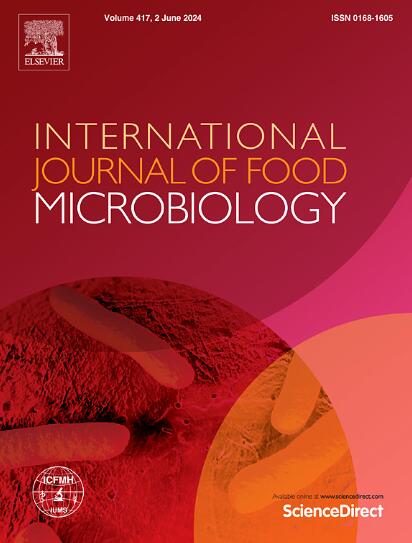Structure of culturable indigenous yeast population and genetic diversity of Saccharomyces cerevisiae and non-Saccharomyces yeasts during spontaneous fermentation of Etna vineyards grapes
IF 5.2
1区 农林科学
Q1 FOOD SCIENCE & TECHNOLOGY
International journal of food microbiology
Pub Date : 2025-05-26
DOI:10.1016/j.ijfoodmicro.2025.111282
引用次数: 0
Abstract
The microbial diversity of indigenous yeasts plays a fundamental role in the spontaneous fermentation of wines, contributing to the concept of microbial terroir and potentially influencing the sensory profile of the final product. This study explores the yeast ecology and genetic diversity of Saccharomyces cerevisiae and non-Saccharomyces yeasts in four wineries located on two different sides of Mount Etna, a region of unique viticultural significance due to its volcanic soils and diverse microclimatic conditions. A total of 454 yeast isolates were obtained from spontaneous fermentations of different grape varieties, and identified as belonging to 18 distinct species. The spontaneous fermentation was characterized by an initial dominance of non-Saccharomyces yeasts, especially Hanseniaspora uvarum and Metschnikowia pulcherrima, followed by a gradual dominance of S. cerevisiae at later stages. Microsatellite genotyping revealed significant genetic diversity among S. cerevisiae strains, with some distinct genetic patterns associated with Italian winery environments. Additionally, H. uvarum exhibited significant genetic variation but lacked clear geographic clustering, suggesting complex ecological and enological interactions. Statistical analyses of microbial diversity indices indicated that vineyard-specific factors, including altitude, soil composition, and agronomic practices, may influence yeast community structure among the four wineries. These findings provide new insights into the microbial ecology of Etna wines and highlight the potential of indigenous yeast populations for maintaining and enhancing regional wine identity.
埃特纳葡萄园葡萄自发发酵过程中可培养的本地酵母群体结构及酿酒酵母与非酿酒酵母的遗传多样性
本地酵母的微生物多样性在葡萄酒的自发发酵中起着重要作用,有助于微生物风土的概念,并可能影响最终产品的感官特征。本研究探讨了位于埃特纳火山两侧的四个酒庄的酵母生态学和酿酒酵母和非酿酒酵母的遗传多样性。埃特纳火山是一个因其火山土壤和多样的小气候条件而具有独特葡萄栽培意义的地区。从不同葡萄品种的自然发酵中分离得到454株酵母菌,经鉴定属于18个不同的种。自发发酵的特点是,非酵母菌,特别是uvarum Hanseniaspora和Metschnikowia pulcherrima在初始阶段占主导地位,随后在后期逐渐占主导地位。微卫星基因分型揭示了酿酒葡萄球菌菌株之间存在显著的遗传多样性,其中一些遗传模式与意大利酒厂环境有关。此外,小黄人具有显著的遗传变异,但缺乏明确的地理聚类,表明存在复杂的生态和微生物相互作用。微生物多样性指数的统计分析表明,海拔、土壤组成和农艺措施等因素可能影响4个酒庄的酵母群落结构。这些发现为埃特纳葡萄酒的微生物生态学提供了新的见解,并突出了本地酵母种群在维持和增强地区葡萄酒身份方面的潜力。
本文章由计算机程序翻译,如有差异,请以英文原文为准。
求助全文
约1分钟内获得全文
求助全文
来源期刊
CiteScore
10.40
自引率
5.60%
发文量
322
审稿时长
65 days
期刊介绍:
The International Journal of Food Microbiology publishes papers dealing with all aspects of food microbiology. Articles must present information that is novel, has high impact and interest, and is of high scientific quality. They should provide scientific or technological advancement in the specific field of interest of the journal and enhance its strong international reputation. Preliminary or confirmatory results as well as contributions not strictly related to food microbiology will not be considered for publication.

 求助内容:
求助内容: 应助结果提醒方式:
应助结果提醒方式:


